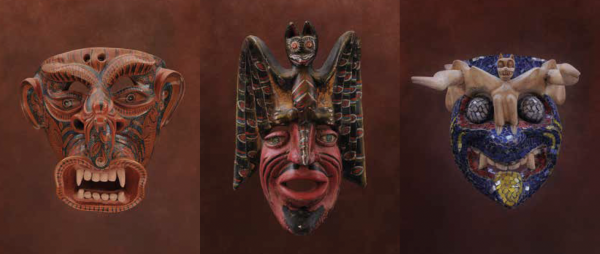Examples of the Incredible Diversity of Masks in Mexico
There are hundreds, if not thousands, of people in Mexico who have made masks during the last several millennia. Most of their names have never been attached to the objects they have produced, but their work lives on in the villages still using these masks in dances and celebrations, in the homes of collectors around the world, and in large and small museums. In this display, some of the great diversity of masks produced is represented. Many of these masks are from makers in Chiapas, Guerrero, Puebla, Michoacán, Tlaxcala, and other Mexican states where indigenous peoples and traditions continue to flourish.
 |
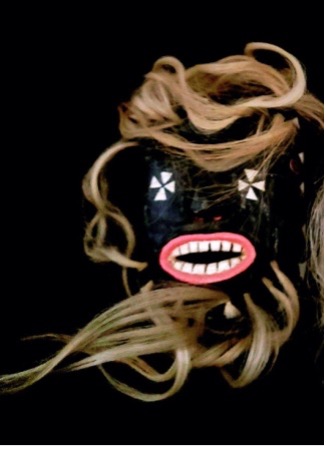 Yaqui Mask Yaqui MaskArtist: Unknown Sonora Wood, paint, pony hair 21st century Loan from Lisa DiGioia-Nutini |
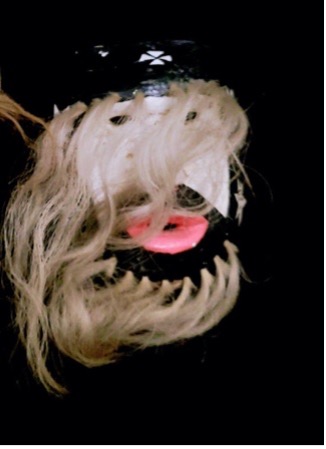 Yaqui Mask Yaqui MaskArtist: Unknown Sonora Wood, paint, pony hair 21st century Loan from Lisa DiGioia-Nutini |
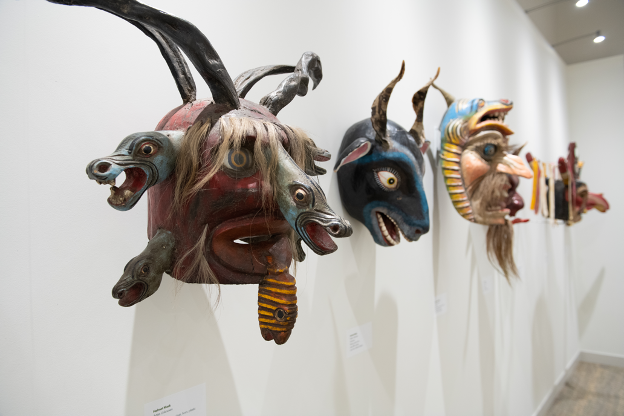 |
The Future of Mask-making in Mexico
Masks are a means by which we transform ourselves into our innermost fantasies and beings. They are a common device used to transform ordinary people into super humans as with Superman, Batman, Batgirl, Zorro, the Lone Ranger, Spiderman, and many of the heroes of the Marvel comics and movies. Masks are also a way for people to become anonymous, whether it is to commit crimes, demonstrate against policies of governments, or to create alluring presences at masked balls. Masks have long been used in wars, mining operations, hospitals, pandemics, and other dangerous situations as protective devices. Having been used for centuries, it is likely that masks and mask-making will continue to be an enduring and evolving aspect of Mexican culture just as it will be around the world.
“As the world became safer after the COVID pandemic, it was very important for people to return to their dances, masks, carnivals, and traditions because they believe these practices are an effective means by which they can restore order to their lives, communities, and the Universe.”
Blanca Cárdenas Carrión, Ethnologist, Dirección de Etnología y Antropología Social, Escuela Nacional de Antropología e Historia
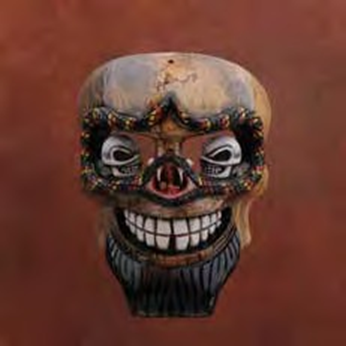 Calavera (Skull) Mask Calavera (Skull) MaskArtist: Rafael Mesa Oliva Naolinco, Veracruz Wood 21st Century Rob Gaston Collection |
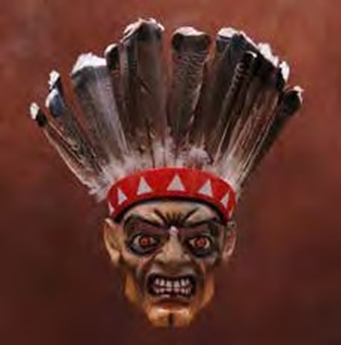 Apache Mask Apache MaskArtist: Rafael Mesa Oliva Naolinco, Veracruz wood, feathers 21st century Rob Gaston Collection |
Acknowledgments
Mexican Masks: Symbols, Celebrations, Satire and Safety would not have been possible without the collaboration and cooperation of collectors from the United States and Mexico.
Rob Gaston, a prominent exhibit designer and builder based in Colorado has been collecting masks for many years and has provided the majority of the masks in the exhibit.
Blanca Cárdenas Carrión and Carlos Arturo Hernández Dávila, researchers and administrators at the National School of Anthropology and History (Escuela Nacional de Antropología e Historia) have been extraordinarily helpful in sharing their research and expertise on masks and mask-making in Mexico. It was they who had the foresight and inspiration to commission makers to portray the COVID-19 virus in masks.
Jean Nutini, who divides her time between Pittsburgh and Tlaxcala, Mexico provided the prints and paintings created by the late artist Desiderio H. Xochitiotzin.
Lisa Digoia-Nutini, owner of the México Lindo Mercado y Galería de Artesanias in Pittsburgh loaned some of the extraordinary objects from her personal collection.
Joel Aaronson and Claire Keyes provided both pre-Hispanic masks and vintage dance masks from their personal collection.
Aaron Fellmeth, Executive Director of Second Face Museum of Cultural Masks in Phoenix, Arizona, generously gave us permission to use films produced by that institution.
Bill DeWalt and Sylvia Keller developed the concepts and ideas, provided the interpretive label text for the exhibit, and loaned objects from their personal collection.
Finally, LACC gratefully acknowledges the creativity and work of the many artisans whose works are presented in this exhibit.


